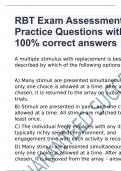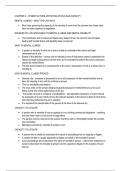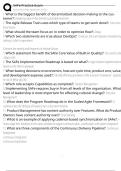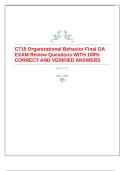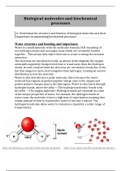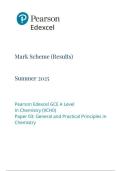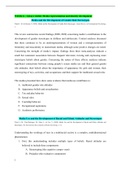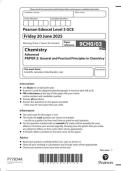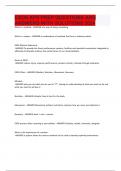Buffering negative news: Individual-level effects of company visibility, tone, and
pre-existing attitudes on corporate reputation
Jonkman, J.G.F., Boukes, M., Vliegenthart, R., & Verhoeven, P. (2019). Buffering negative news: Individual-level effects of company
visibility, tone, and pre-existing attitudes on corporate reputation. Mass Communication and Society. Advance online
publication. https://doi.org/10.1080/15205436.2019.1694155
This paper seeks to inform agenda-setting research by refining and testing key propositions
about the direct and conditional influence of corporate visibility and tone on corporate
reputation. The methodological approach enables to make convincing causal claims about the
relationship between exposure to company news and the reputations of these corporations in
the eye of the public (Meijer & Kleinnijenhuis, 2006b). Altogether, the present research
questions will be tackled: to what extent do media visibility and tone of coverage influence
corporate reputation, and how are these media effects moderated by prior reputation?
This study has examined the influence of media visibility and tone of news coverage on
corporate reputation and how these effects are moderated by prior reputation. The results of
the study suggest that corporate visibility in the news can have a negative effect on
reputation, whereas tone can have a positive effect. Specifying this effect of valence into
more detail, the paper shows that the effect of negative news is significantly stronger than
that of positive news. Moreover, analysis at the individual level enabled an assessment of
whether certain people are more susceptible to these influences than others are support is
found for the theoretical argument: A positive prior reputation may indeed function as a
“buffer” against future negative news coverage (Coombs & Holladay, 2006; Sohn & Lariscy,
2015).
Study questions:
1. What is ‘corporate reputation’?
Corporate reputation is a central concept in management and public relations literature, and
refers to the way in which members of the public, or specific organizational stakeholders,
evaluate a firm
2. How are media visibility and reputation related, according to the findings of this
article?
1
, The results of the study suggest that corporate visibility in the news can have a negative
effect on reputation. The more a company is covered in the news, the more its reputation will
suffer (because news often make use of negativity appeals).
3. How are the tone of news coverage and reputation related, according to the findings
of this article?
Visibility and tone are so strongly correlated: Exposure to more company news in most cases
means exposure to more negative company news. That is, similarly to the previous question,
because negativity is often used in the news, the more a company is visible in the news
coverage, the more it will be discussed negatively – and the more its reputation will be
harmed.
4. How does pre-existing reputation affect the effect of the tone of news coverage on
corporate reputation?
Corporations with good reputations are arguably more likely to attract positive coverage,
whereas firms with bad reputations tend to receive more negative coverage (Deephouse,
2000). This finding may point to a sort of “reputational spiral effect” through which firms
with good reputations benefit from coverage, whereas coverage is mainly disadvantageous
for companies of poor repute. In particular, the study finds that negative effects of news
coverage on reputation are less powerful for corporations with better prior reputations (prior
reputation functions as a “buffer”).
Social media and the formation of organizational reputation
Etter, M., Ravasi, D., & Colleoni, E. (2019). Social media and the formation of organizational reputation. Academy of Management
Review, 44(1), 28-52. https://doi.org/10.5465/amr.2014.0280 (Links to an external site.)
The rise of social media is changing how evaluative judgments about organizations are
produced and disseminated in the public domain. In this article, it is discussed how these
changes question traditional assumptions that research on media reputation rests upon.
Extant research on the interrelations between organizations and the media system, and on
how the latter influences the formation of organizational reputation, is based on assumptions
developed when most publicly available evaluations of organizations were produced and
disseminated by traditional news media (or the organizations themselves). In this article, it is
2
,argued that these assumptions have become less accurate and/or productive in a modified
media landscape, where social media and digital technologies are changing how information
about organizations is produced and disseminated in the public domain, even by traditional
news media.
The present framework begins to account for the active role of these audiences in shaping the
content of publicly available evaluations, as well as the paths and patterns of their diffusion.
This framework draws attention to how social media now enable these audiences to
independently exchange and disseminate evaluations in the public domain, reaching vast
audiences without necessarily relying on the gatekeeping role of news media. By doing so
organizational audiences are now able to publicly challenge evaluations offered by the media,
or even to subvert images projected by organizations themselves to highlight contradic- tions
between communication and action. These changes suggest that in future research scholars
should pay more attention to the active and direct engagement of audiences, rather than
assuming that audiences influence reputation mainly when the news media pay attention to
their actions (e.g., King, 2011).
The second framework also highlights how social media have amplified the possibility that
organizational audiences will expose themselves to different partial and possibly inaccurate
representations and will propagate these representations selectively to restricted groups that
insulate themselves from alternative and opposing views. Current theories tend to consider
the public sphere as a large venue where news media mediate most efforts to disseminate or
dispute evaluations in the public domain. In the new media landscape, instead, the
fragmentation of media and audiences and the selective exposure to and propagation of
heterogeneous information are increasingly segmenting the public sphere into multiple
“interaction arenas” (Bromberg & Fine, 2002).
3
, 4

